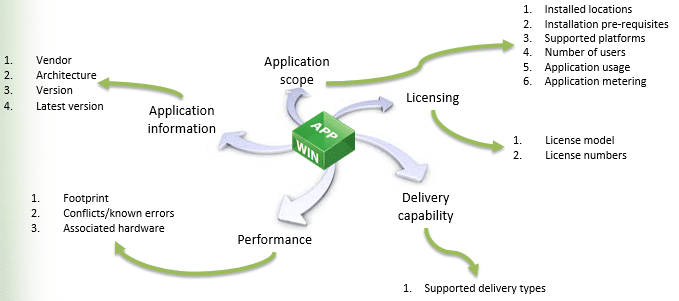Those who do not learn from history are doomed to repeat it.
Attributed to Winston Churchill, this quote has a particular resonance for IT projects. Over the past fifteen years or so, near enough every project I have worked from has suffered from the same problem – that there is not a sufficient understanding of the application estate and the end-user experience.
Ideally every business should know everything about all the applications they have in use. But the modern world is far from ideal. Resources are scarce and keeping on top of all of this information can be a mammoth task – many companies simply respond with a shrug when they are faced with questions about their application estate. If enterprises are composed of several independent business units with their own support groups, the problem can be made even worse. And then there is the issue that some like to call “Shadow IT” – where individual departments have provisioned their own on-premise or SaaS applications, or even developed their own solutions, all under the radar of the IT department(s).
But we can’t get away from the fact that starting any major infrastructure project necessitates a clear understanding of the scope of the applications in your environment and how the users utilize them. Have you ever needed to know how many x64-compatible applications you’re dealing with in, for instance, an OS upgrade? Is that information ever readily available? Have you ever had users who have said, post-upgrade, that the system is “slow”? And do you have the relevant metrics to hand – hard data from both pre- and post-upgrade devices – in a way that doesn’t rely on someone’s subjective opinion of the system’s speed?

This Wisconsin manufacturer needed to modernize its IT infrastructure to support rapid business growth.
Discover what they didThese are just two examples among many. But even today, IT projects are not learning from historical mistakes. There is a belief that existing monitoring tools – such as System Center – are sufficient to provide the data required for any project to both understand the scope of applications and the end-user experience.
But tools like System Center are infrastructure- and configuration-focused. There’s no visibility into the end-user’s actual experience. And they don’t give great information on applications beyond simple usage statistics. We’re not looking to understand usage alone. The scope of the application estate goes way beyond simple usage stats. For Windows applications alone, the information I would like to have to hand in order to fully understand my application estate would be this:-

With this information on hand, establishing the delivery method for each application can become key to both the user experience, the portability, and the management of the environment. Applications can be delivered in myriad different ways in the modern IT world. They can be installed, packaged, layered, published, advertised, containerized – even delivered via SaaS or VM-hosting. Selecting the right delivery method for applications is absolutely key to striking the balance between ease of management and user satisfaction. And we have to admit that today, user satisfaction is far more important than it ever has been.
Twenty, maybe even fifteen years ago, the landscape was different. Users often didn’t have PCs or computing devices at home, and only got to use one when it was provided as a work tool. But nowadays users have many devices in their personal lives that they can compare their work systems to – often very unfavorably. A lot has been made of the “iPad effect” – where users expect the speed, simplicity and reliability of devices like iPads to be reflected in the systems they are given to use in their workplace to access office applications such as CRM, ERP, HR systems. Concentrating the focus of monitoring in your environment on the servers, networks and supporting infrastructure is simply not enough. You have to accept and manage the expectations that your users bring, and monitor the experience on their endpoint devices to ensure that they are being provided with an optimal experience. Often the hardest part of this is convincing dyed-in-the-wool IT departments that they need to adjust their focus so that the client end of the estate is treated with as much importance as the back-end servers.
It is also worth mentioning that the benefits of this understanding and overview of the estate is not simply limited to the project. Ongoing monitoring of this sort can enable support teams to proactively identify issues rather than waiting for users to report issues. Identifying trends of problems that impact the user experience – slow logons, application crashes, etc. – can allow support personnel to apply fixes without relying on initial user contact. Applications can be monitored for usage, allowing you to scale up or down license investments as required. The possibilities for using client-side monitoring and analysis as a full-time tool are very broad indeed.
So, how would you go about gathering all of the data to allow you to understand your application estate and end-user experience? Unless you’re the world’s greatest scripter, then you’re going to be looking at third-party software. We will discuss some of the vendors in this space in part #2 of this article.



